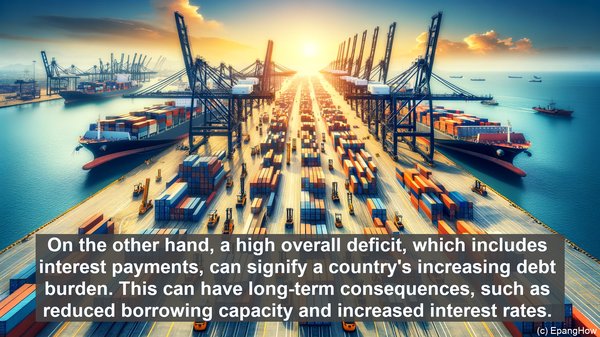Introduction: The Significance of Deficits
Hello everyone, and welcome to today’s discussion. Deficits are an integral part of fiscal policy, and they often shape the economic landscape. They represent the gap between a government’s spending and its revenue. However, within the realm of deficits, there are various classifications, with the primary deficit and overall deficit being two key ones. Today, we’ll explore the nuances that differentiate these two terms.
Defining the Primary Deficit
Let’s start with the primary deficit. It refers to the difference between a government’s total expenditure, excluding interest payments on its debt, and its revenue. In other words, it focuses solely on the core expenses and income, excluding any financial obligations related to interest. By analyzing the primary deficit, policymakers can gauge the sustainability of a government’s spending in the long run, as it provides insights into the non-interest-related financial activities.

Understanding the Overall Deficit
On the other hand, the overall deficit encompasses all aspects of a government’s financial situation. It takes into account not only the core expenses and revenue but also the interest payments on the accumulated debt. The overall deficit provides a comprehensive view of a government’s financial health, as it considers both the immediate financial activities and the impact of past borrowing. It is often used as a key indicator of a country’s fiscal stability.
Factors Influencing the Primary and Overall Deficits
Several factors can influence both the primary and overall deficits. Economic conditions, such as the growth rate and inflation, play a significant role. During periods of economic expansion, revenue generation tends to be higher, potentially reducing the deficits. Conversely, during economic downturns, revenue may decrease, leading to larger deficits. Additionally, policy decisions, such as changes in tax rates or government spending, can also impact the deficits. For example, a tax cut may initially lead to a higher deficit, while a reduction in government expenditure can help in deficit reduction.
Implications of the Primary and Overall Deficits
Both the primary and overall deficits have their own implications. A high primary deficit, even without considering interest payments, can indicate a government’s excessive spending, potentially leading to financial instability. On the other hand, a high overall deficit, which includes interest payments, can signify a country’s increasing debt burden. This can have long-term consequences, such as reduced borrowing capacity and increased interest rates. Therefore, it is crucial for policymakers to monitor and manage both types of deficits effectively.

